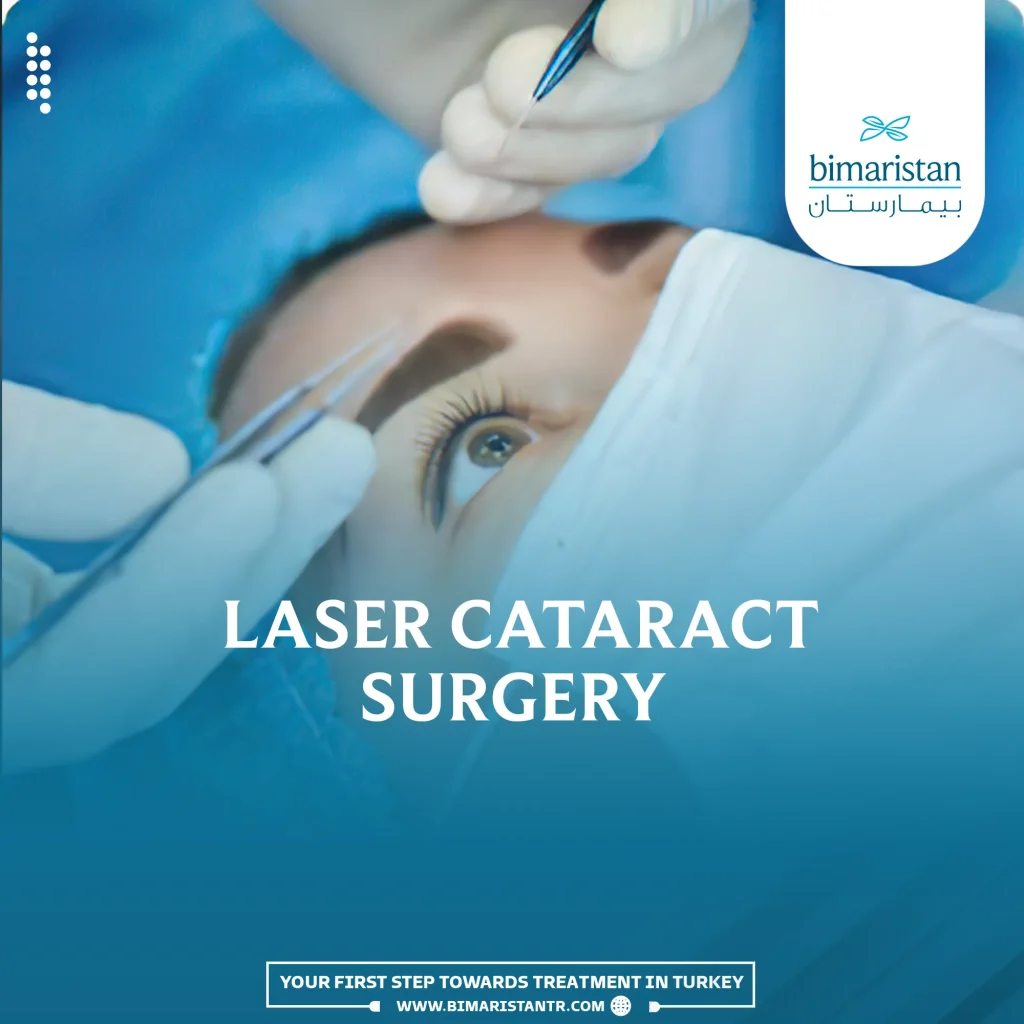Laser-assisted cataract surgery is used to treat cataracts in the eye. Improving vision after this surgery is faster and better than traditional methods.
Laser technology entered the cataract treatment and eye lens implantation field in the past decade, leading to a significant revolution in many eye surgeries. One of the most critical surgeries is lens implantation to treat cataracts in the eye without the need for the old traditional cataract surgery that relies on a scalpel.
The precision of femto laser technology is not the only thing that sets it apart; performing femtosecond laser cataract surgery has led to perfect results that cannot be achieved through old surgical methods regarding post-operative recovery and patient vision improvement speed. Follow us in this article to learn all the details of white water laser surgery in Turkey.
What is femto laser-assisted cataract surgery?
Femtosecond cataract surgery is a surgical procedure on the eye to replace the patient’s cloudy lens with a new artificial lens that allows for clear vision. This is done with the help of a femto laser to create precise and safe surgical incisions that cannot be achieved with traditional surgery using a manual scalpel.
In addition, using the laser allows for less energy than the traditional method for fragmenting the cloudy lens before removal, resulting in less damage to the surrounding eye tissue at the lens implantation site.
Causes of cataracts in the eye
As people age, there may be a breakdown in the proteins that make up the natural lens of the eye, causing it to change from a transparent lens that allows light to pass through to a white lens that blocks it, leading to what is known as “Blurred vision” which people refer to as “cataracts.”
At this point, it becomes necessary to remove the cloudy lens (Eye lens removal) and replace it with a transparent lens that allows light to pass through. This is done through lens implantation surgery. Previously, this was done using a manual scalpel and ultrasound waves, but recently, laser cataract removal has been performed in Turkey (laser surgery to remove cataracts).
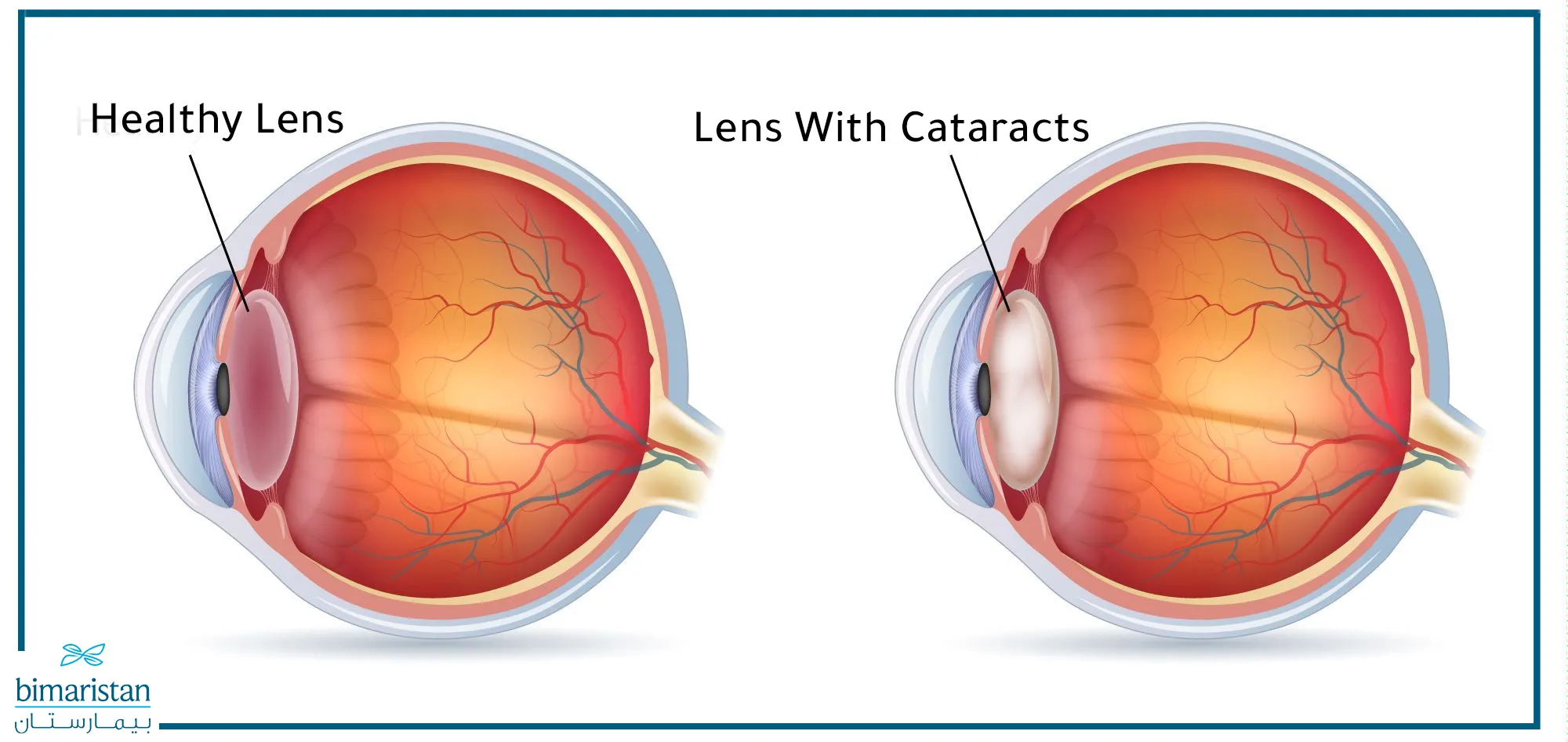
Advantages of cataract surgery with laser
Laser-assisted cataract surgery has several advantages that make it preferred by eye doctors for treating cataracts in the eye. Some of these advantages include:
- Creating a three-dimensional map of the eye to determine where surgical incisions will be made for cataract removal surgery and lens implantation.
- Greater precision in creating surgical incisions, making the procedure more accessible and more regular than with a manual scalpel.
- Easy creation of surgical incisions. This is necessary, especially when the patient has had cataracts for a long time, making the cloudy lens very dense and difficult to develop a manual incision.
- Reduced downtime after surgery due to less energy used by the laser, resulting in less swelling and faster healing.
- Correction of astigmatism with the laser during the same procedure if the patient also suffers from blurred vision.
- The possibility of not needing glasses after cataract surgery with laser depends on the experience of the eye doctor and the development of the medical center where the procedure is performed.
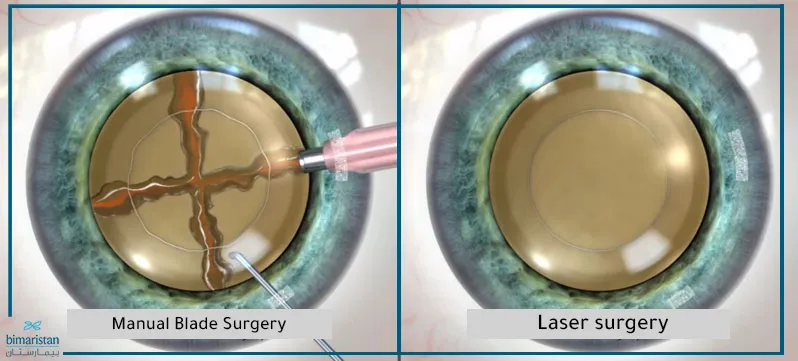
Preparing for laser-assisted cataract surgery
Preparing for laser-assisted cataract surgery is usually done under general anesthesia, so the patient may be asked to refrain from eating and drinking for 12 hours before the procedure. If the patient is on certain medications, the timing of stopping and resuming them will be discussed with the doctor.
A serum is installed in the patient’s vein to administer anesthesia, after which the patient falls asleep within seconds. An eye drop is also applied so the patient feels nothing during the procedure. The area around the eye is sterilized and a cloth is placed over the face, revealing only the eye. Then, a dilating drop is applied to dilate the pupil so the patient is ready for the procedure.
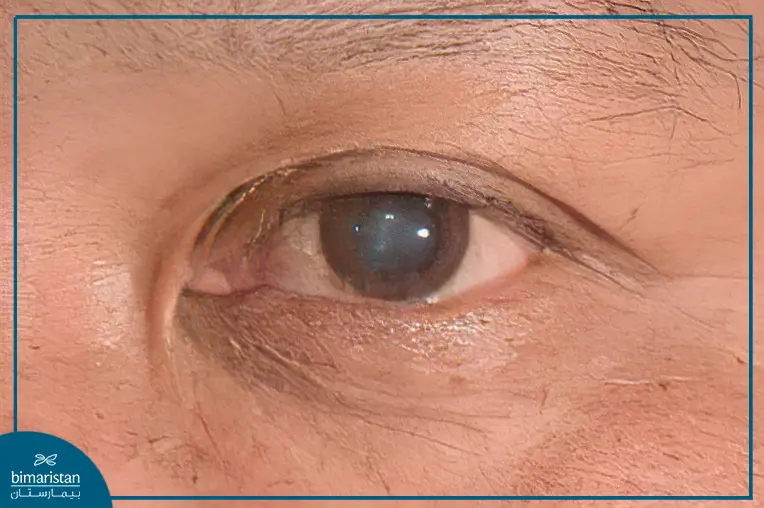
The operation of laser-assisted cataract surgery
The femtosecond laser cataract surgery steps in Turkey are as follows:
- Laser incision: After fixing the eye on the laser device, areas on the patient’s corneal periphery are identified for incisions using optical coherence tomography (OCT). Subsequently, the femtosecond laser is used to create the desired incisions.
- Cataract fragmentation: Femtosecond laser helps break down the degraded protein mass in the lens (called cataract) into smaller parts that can be easily emulsified by ultrasound waves, thus requiring less laser energy.
- Lens emulsification: This stage involves sending ultrasonic waves to break down and dissolve the accumulated degraded protein mass, making it easier to remove from the eye using a delicate probe inserted into one of the incisions.
- Extraction of the lens capsule: This is done by creating a circular incision in the front face of the lens capsule to reach the cataract. Precision in extraction plays a crucial role in the success of the operation, which is ensured by using the laser.
- Implantation of a new eye lens: This folded lens is inserted into its chamber using a probe inserted through one of the incisions. It unfolds automatically when injected into its chamber.
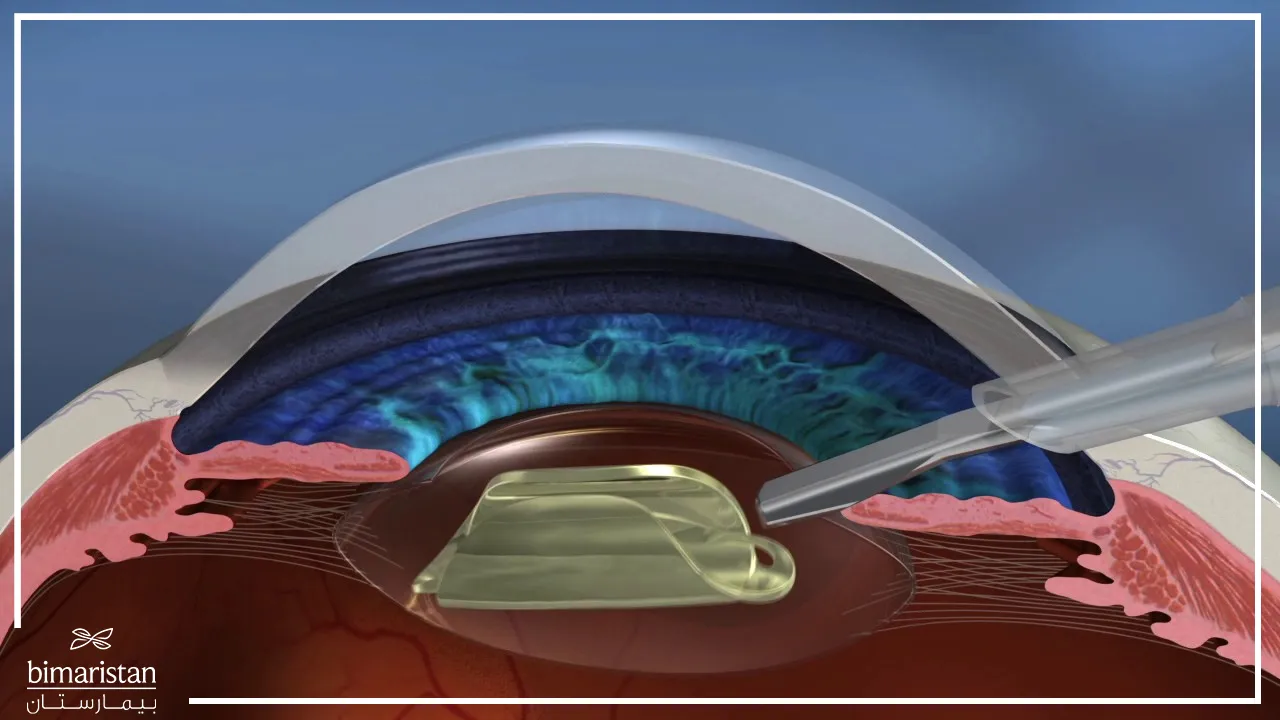
The procedure ends here. There is no need for any surgical sutures at the incision sites as they will close spontaneously. The eye is covered with a medical dressing, and anesthesia is stopped so the patient wakes up and can return home on the same day. The entire laser-assisted cataract surgery process, with its five stages, takes about 30 minutes. Here is a video demonstrating a cataract surgery and implantation of a new lens…
Recovery after laser cataract surgery
The patient is examined after the femtosecond laser-assisted cataract surgery FLACS to ensure their health condition and then discharged from the hospital if there are no complications. The patient may experience blurred vision immediately after cataract surgery, which gradually improves within a few days. The patient is monitored by the surgeon who performed the laser-assisted cataract surgery during the post-operative period.
The patient can usually drive within a week after laser-assisted cataract surgery, but it’s essential to follow the ophthalmologist’s advice. Vision improvement and recovery continue for up to three months, during which eye drops may be prescribed to prevent potential eye infections.
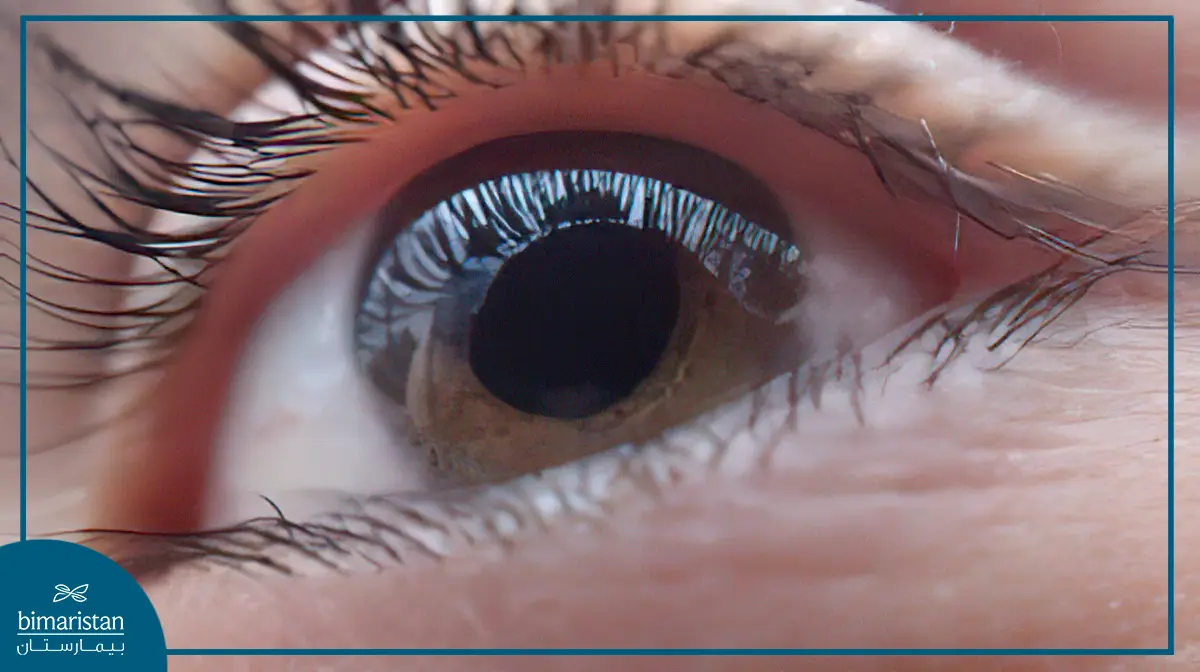
Post-operative tips after laser cataract surgery
After undergoing cataract surgery with laser, it’s essential to follow the doctor’s instructions to ensure proper recovery and prevent any complications. Here are some tips:
- Avoid visually strenuous activities; you may experience some sensitivity or itching in the eye after surgery, so it’s best to avoid activities that require a lot of visual concentration, such as reading books or prolonged use of a mobile phone.
- Use eye drops as prescribed by the doctor; the doctor may prescribe anti-inflammatory or moisturizing eye drops to aid in quick healing and alleviate bothersome symptoms such as dryness or itching.
- Avoid rubbing or putting pressure on the eye in any way, as this may cause damage to the eye and delay the healing process.
- Avoid exposure to sunlight after cataract surgery with laser; your eyes may be more sensitive to light after surgery, so it’s advisable to use sunglasses to protect your eyes from UV rays and glare.
- Avoid direct water splashing on the eye for approximately two weeks after surgery, as this can cause injury to the eye and delay healing.
- You should adhere to scheduled visits to see the doctor, as the doctor will examine your eye, monitor recovery, and ensure that there are no complications.
- It’s best to avoid traveling shortly after cataract surgery; you may experience some symptoms, such as eye sensitivity or blurred vision, and it may take some time to recover fully. It’s best to ensure that the recovery period after cataract surgery has ended and that your eye has healed well before deciding to travel.
- You should also consult your doctor for specific guidance tailored to your case.
Complications of laser cataract surgery
Laser-assisted Cataract surgery in the eye is considered very safe, with a high success rate, reaching up to 98-99%. However, as with any surgical procedure, some patients may experience side effects such as:
- Mild itching
- Mild discomfort
- Slight swelling in the eye
In rare cases, patients may experience bothersome symptoms that do not usually occur when the surgeon is experienced. The most important of these complications include:
- Severe eye pain
- Loss of vision
- Eyelid swelling
- Seeing flashes of light
- Gradual increase in redness in the eye
- Cataract formation again several months after surgery
Contact your doctor immediately if you experience any of these symptoms for urgent intervention and to avoid permanent eye damage.
When can’t we perform laser-assisted cataract surgery?
In rare cases, we may be unable to perform laser-assisted cataract surgery. The most important of these cases are the presence of dense scars in the cornea or a functional defect in the eye’s pupil that prevents it from dilating sufficiently to undergo surgery. These conditions often result from previous surgical procedures on the cornea or when the patient suffers from glaucoma.
Laser cataract removal cost in Turkey 2023
The cost of femto laser cataract surgery in Turkey starts at around 500$. Still, you must contact us so that the doctor can evaluate your condition and inform you of the details of the surgery and its exact price. We will guide you to the Bimaristan Medical Center, which has the most experienced eye doctors and the most advanced ophthalmology centers in Turkey.
Laser-assisted cataract surgery can be considered one of Turkey’s best options for treating cataracts. The procedure is characterized by its ease of performance, the patient’s ability to recover shortly afterward, and the low complications compared to traditional cataract treatment methods. Recent studies have shown the superiority of laser-assisted cataract surgery over traditional methods.
Source:
